Ocellaris Clownfish Project Noah
Ocellaris Clownfish are one of the smaller clownfish species, reaching full maturity at 3 inches. They are slightly larger than the Percula Clownfish, which only reaches 2.5 inches but much smaller than Maroon Clownfish and other large species. Sexing Ocellaris Clownfish
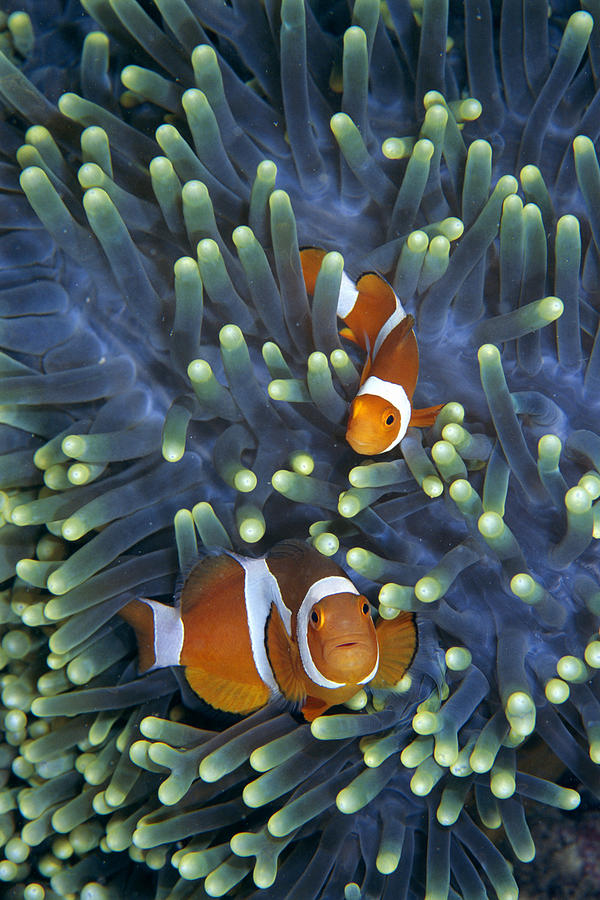
Clown Anemonefish Amphiprion Ocellaris by Hiroya Minakuchi Clown
Amphiprion ocellaris (Cuvier 1830), the false clownfish, is a tropical marine fish found in parts of Asia and Australia. Its range includes Northwest Australia, Southeast Asia, and as far north as the Ryukyu Islands of Japan (Allen 1997). ( Allen, 1997) Biogeographic Regions oriental native australian native pacific ocean native

Anemone fish Clownfish, Symbiosis & Reefs Britannica
Clownfish Anemone Compatibility Chart Updated August 12, 2019 Author: Mike - FishLore Admin Social Media: The Clownfish Anemone Compatibility Chart on this page lists some of the various anemone species along with compatible clownfish species that they can form a symbiotic relationship with.

Group of Ocellaris Clownfish Nestled in a Magnificent Sea Anemone Stock
In This Article. Made famous by the movie Finding Nemo, the ocellaris clownfish is a very popular saltwater aquarium fish. They are good for beginners, being hardy fish and a good fit for smaller aquariums, while providing a vivid orange splash of color. They are "reef-safe," leaving corals alone. Through captive breeding programs, many color.
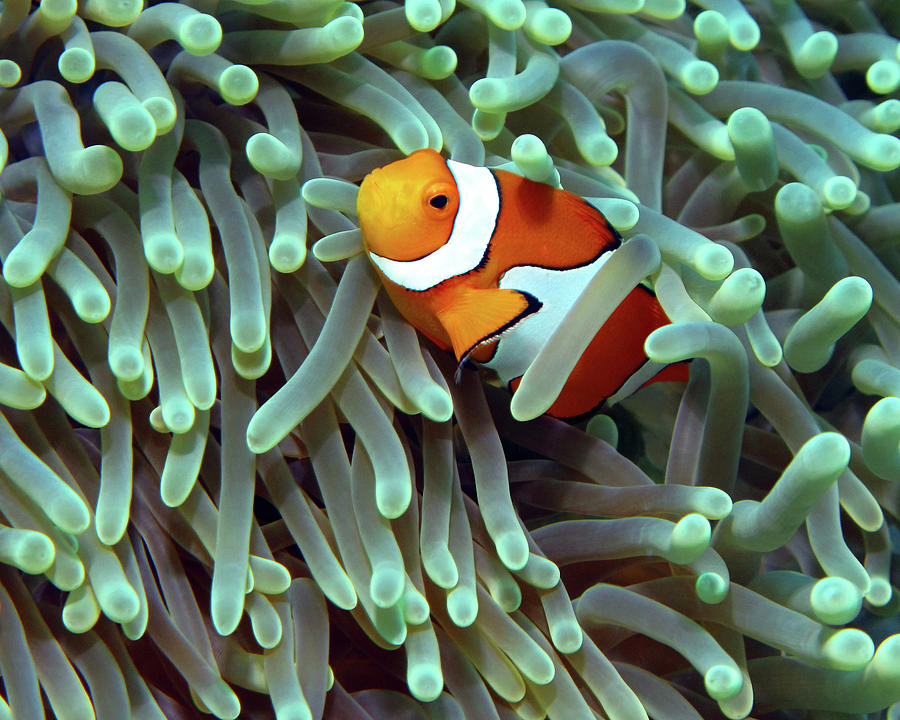
Clownfish in Anemone, Indonesia 5 Photograph by Pauline Walsh Jacobson
The Ocellaris Clownfish is known for an up-and-down swimming motion that is interesting to watch. This species also has a habit of taking up residence inside sea anemones. Author Note: Don't assume that Ocellaris Clownfish are taking advantage of these invertebrates!
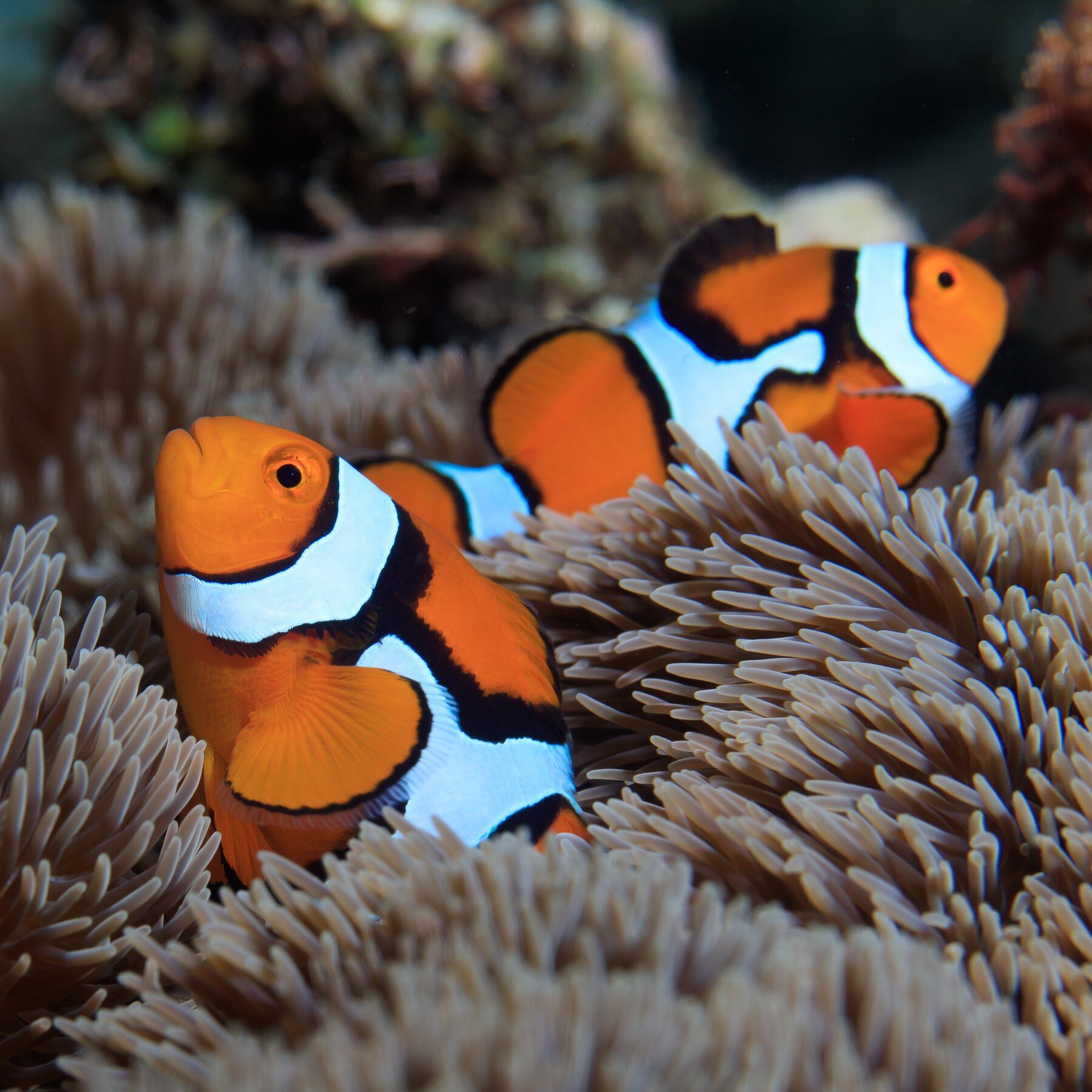
Distinctive white stripes in clownfish form at different rates
Clownfish have been known to host many things other than anemones, including feather dusters and toadstool corals after rejecting every anemone presented to it. Some aquarists believe that tank-raised clownfish do not host anemones as readily as wild-caught clownfish after a few generations.
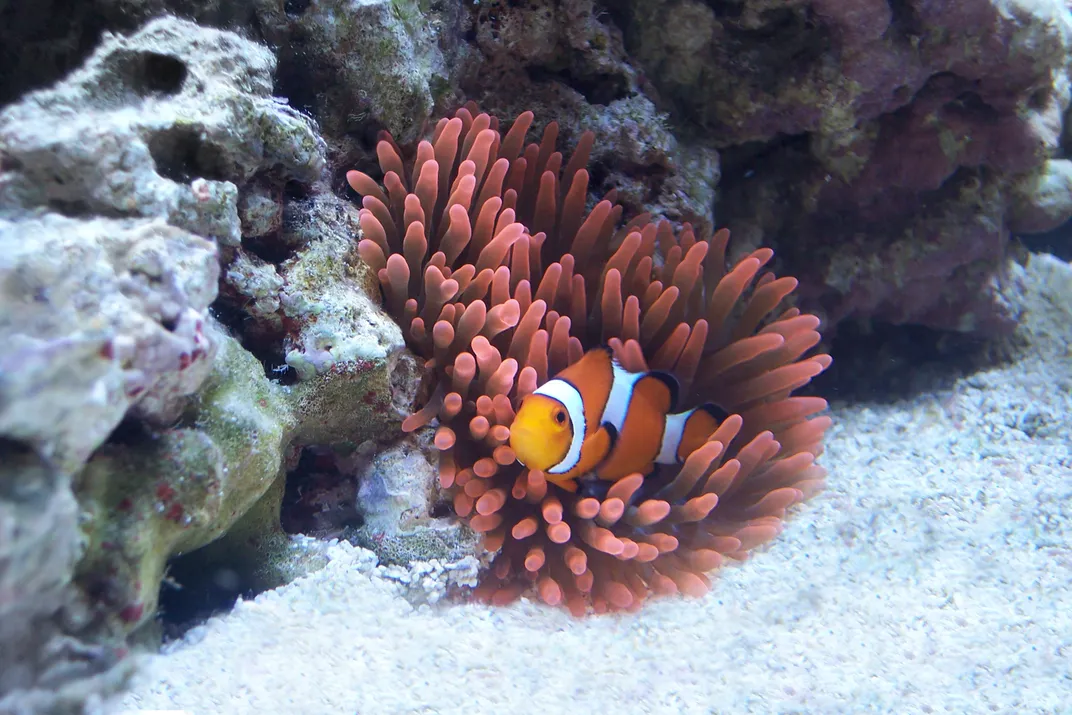
Ocellaris Clownfish in Rose Bubble Tip Anemone Smithsonian Photo
The tube method The way to effectively carry out this strategy of introducing your Clownfish is to acclimate the anemone to the reef tank first. Once the anemone is content and latched onto a rock, then you can start to acclimate your Clownfish.
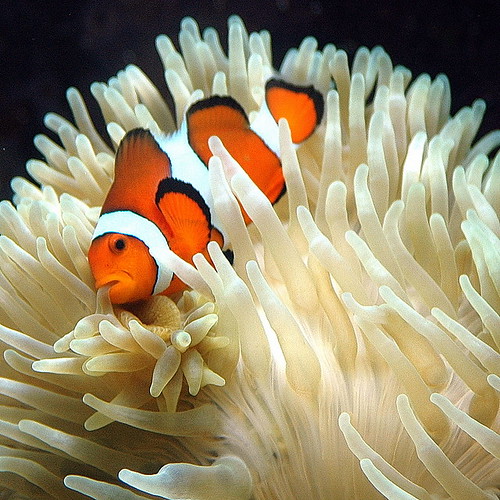
Ocellaris Clownfish & Bubble Tip Anemone Andy Young Flickr
Ecology: Clownfish live within the tentacles of sea anemones. About one-third of the species live with a host-specific species of anemone (Allen et al. 2003). They are highly territorial, forming a symbiotic relationship with anemones. A protective layer of mucus on the fish prevents it from being stung while it takes refuge amongst the.
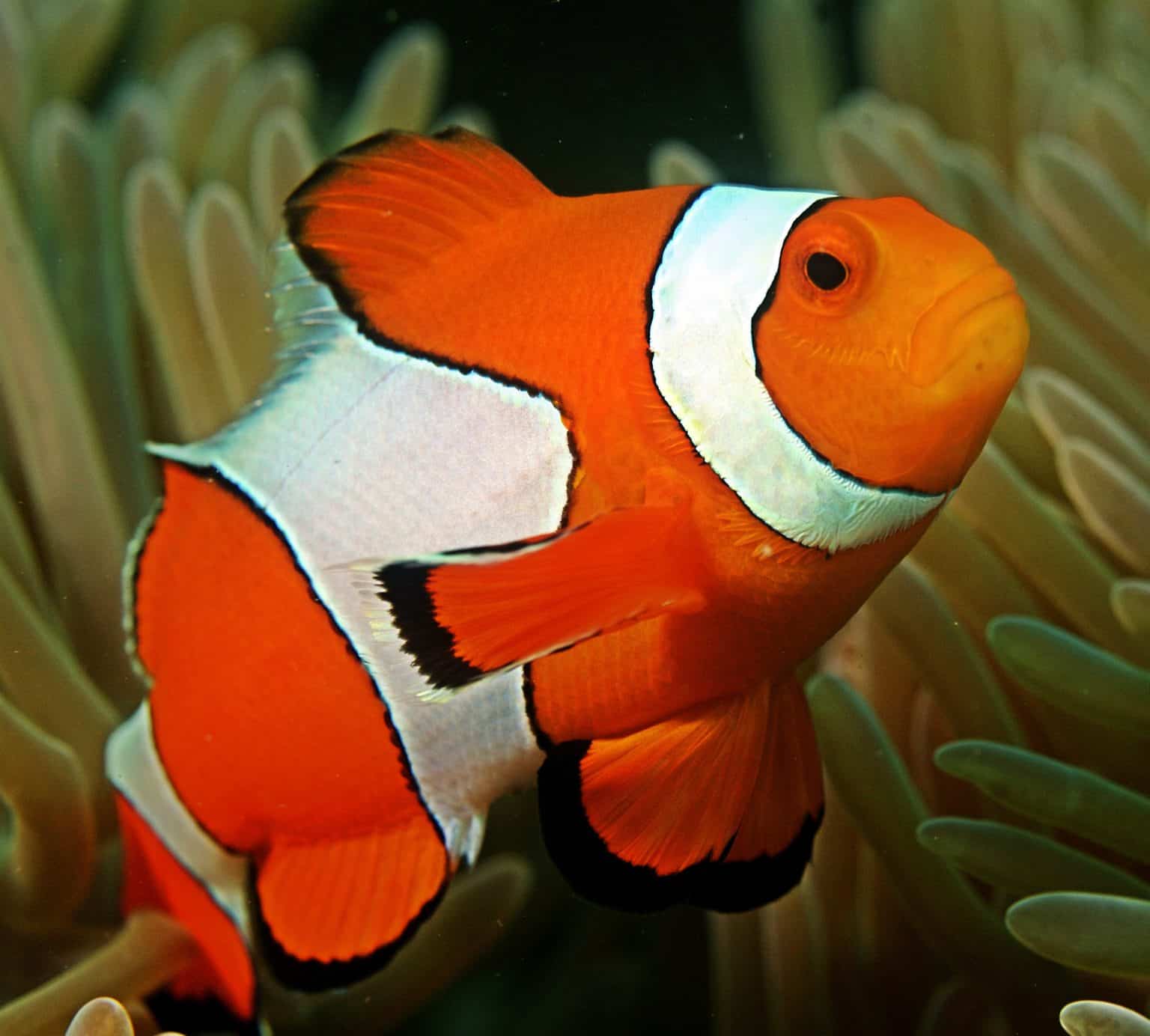
Ocellaris Percula Clownfish Mi Arrecife
Best type of Anemone for Clownfish to host? MRMarineMan Jan 19, 2019 None Jan 19, 2019 #1 M MRMarineMan New Member Joined May 20, 2018 Messages 16 Reaction score 13 Rating - 0% 0 0 0 Hi all, I'm soon going to be starting a saltwater tank and were wondering what type of Anemone / coral would be best for clownfish to host.

Ocellaris Clownfish and Anemone Stock Photo Image of blue, clown
The most common variety of Ocellaris Clownfish is mainly an orange fish with three bold white stripes, the center stripe generally bulging toward the head of the fish. The white stripes are outlined by black stripes, generally thin in the Ocellaris (thicker in the Amphiprion percula or True Percula Clownfish).
:max_bytes(150000):strip_icc()/clownfish_sea_anemone-581b994d3df78cc2e879cc71.jpg)
Mutualism Symbiotic Relationships
Clownfish are hardy fish that can tolerate a large range of water parameters. They are very forgiving of incorrect and wavering parameters as long as they are quickly corrected. Ocellaris clownfish prefer a water temperature between 72-78° F with a pH between 8.0-8.4.

Ocellaris Clownfish (Care Guide) YouTube
Species - ocellaris Common Names The clown anemonefish is referred to as an anemonefish due to its symbiotic relationship with sea anemones. Other English language common names include common clownfish, false-clown anemonefish, nemo, and western clownfish.

Clown Anemonefish (amphiprion Ocellaris) Photograph by Steven Trainoff
Family group of Ocellaris clowns in an anemone. Fortunately for those of us who enjoy keeping Ocellaris clownfish, they are quite easy to keep healthy and happy in a well maintained aquarium. In captivity, False Percula Clownfish can live for over a decade and will grow to almost become part of the family.
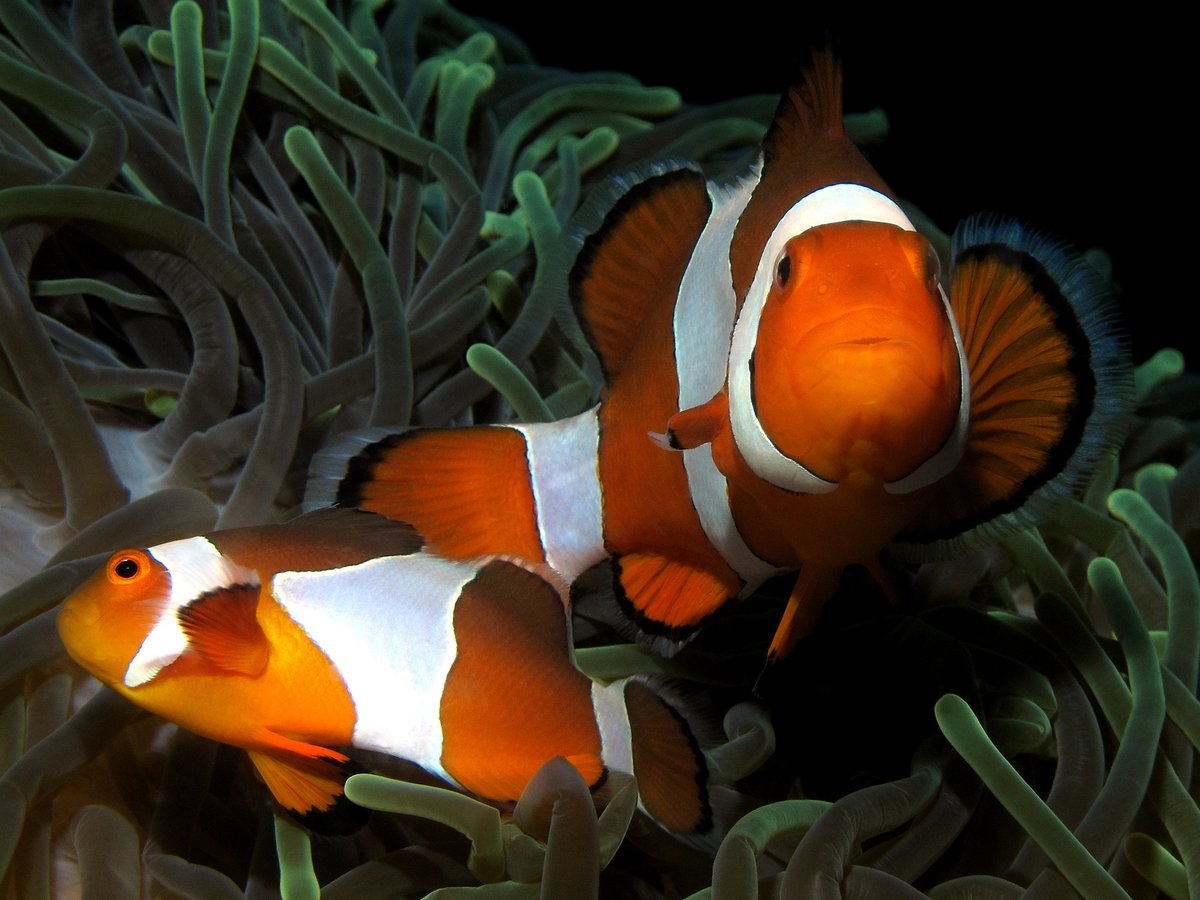
Western Clown Anemonefish, Amphiprion ocellaris Cuvier, 1830 The
The ocellaris clownfish ( Amphiprion ocellaris ), also known as the false percula clownfish or common clownfish, is a marine fish belonging to the family Pomacentridae, which includes clownfishes and damselfishes. Amphiprion ocellaris are found in different colors, depending on where they are located.
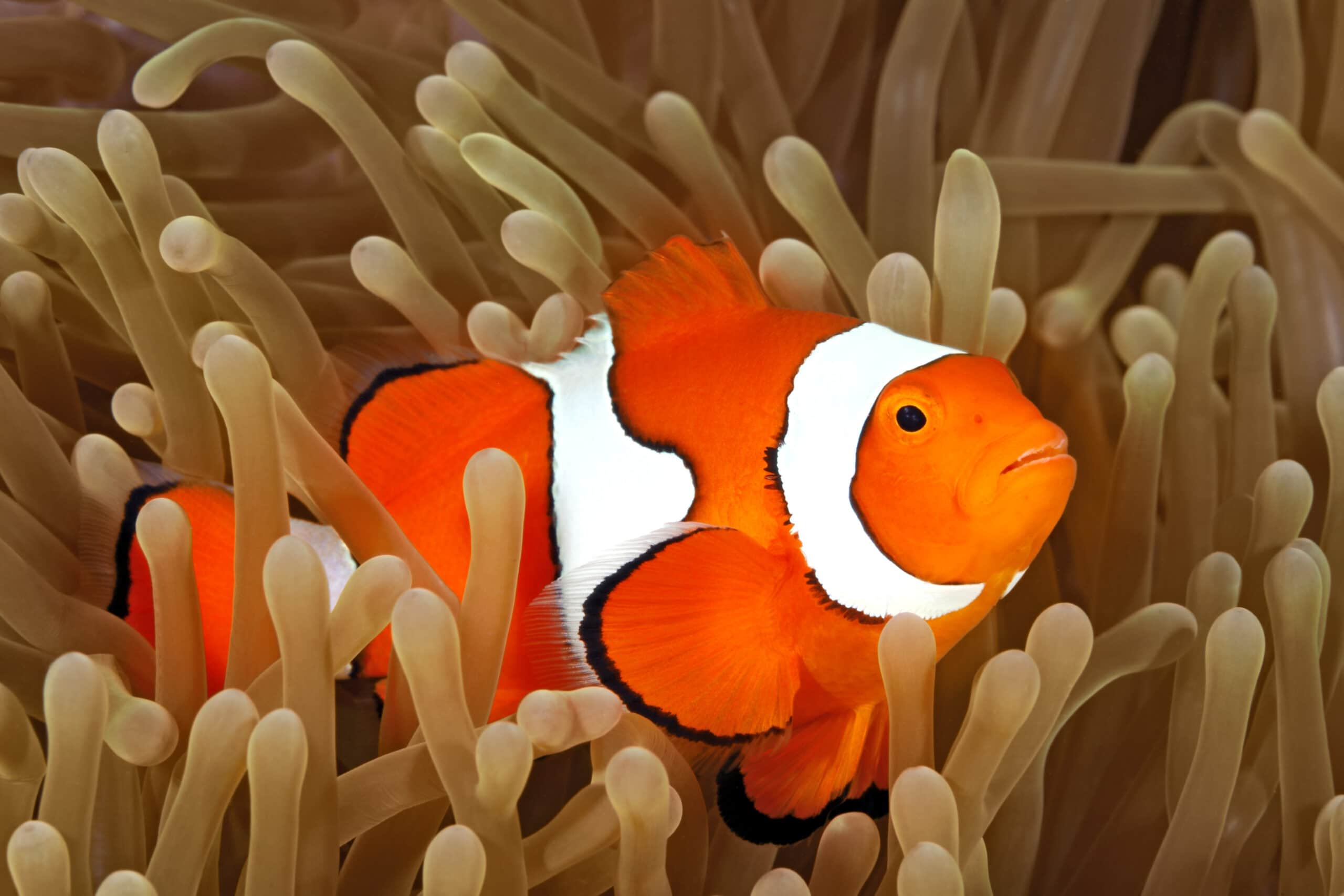
What Clownfish Is Best For My Aquarium? Beginners Education AlgaeBarn
Aquarium care Minimum tank size Are they reef safe? Water chemistry Feeding Compatibility with host anemone species Compatibility with other saltwater fish Breeding Designer Ocellaris Clownfish Types References Quick Facts About the Common Clownfish: Scientific Name: Amphiprion ocellaris

Ocellaris clownfish nestled in a magnificent sea anemone (Heteractis
Breeding Ocellaris clownfish. Common name: Ocellaris clownfish, Anemone Fish, Orange Anemone Fish, Nemo, False percula clownfish. Scientific name: Amphiprion ocellaris. Max size: 4 inches (10 cm) pH: 8 - 8.4. Salinity: 1.020 - 1.024. Temperature : 75°F - 80°F (24°C - 27°C) The Ocellaris clownfish is the perfect beginner fish.